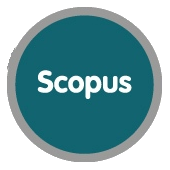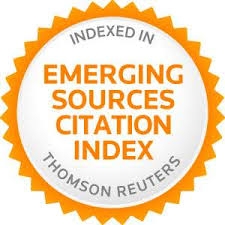Alineación entre las evaluaciones externas y los estándares académicos: El Caso de la Prueba Saber de Matemáticas en Colombia.
Resumen
Palabras clave
Referencias
AERA, APA & NCME (1999). Standards for educational and psychological testing. Washington, DC: AERA.
Bhola, D. S., Impara, J. C., & Buchendahl, C. W. (2003). Aligning tests with states content standards: Methods and issues. Educational Measurement: Issues and Practice, 22(3), 21-29.
http://dx.doi.org/10.1111/j.1745-3992.2003.tb00134.x
Cronbach, L. J. (1971). Test validation. In R. L. Thorndike (Ed.). Educational Measurement (2nd Ed.). Washington, D. C.: American Council on Education.
Hatch, J. A. (2002). Doing qualitative research in education settings. Albany, NY: SUNNY Press.
Herman, J. (2004). The effects of testing in instruction. En S. Fuhrman and R. Elmore (Eds.), Redesigning accountability systems for education (pp. 141-166). New York: Teachers College Press.
Herman, J. L., Webb, N. M. & Zuniga, S. A. (2007). Measurement issues in the alignment of standards and assessments: A case study. Applied Measurement in Education, 20(1), 101-176.
ICFES (2008). Documentos y Marco Legal pruebas SABER. Bajado el 7 de agosto de 2008, de http://www.icfes.gov.co
Lopez, A. A. (2009). Estudio de alineación de las pruebas Saber de Ciencias. En J. Montoya (Eda.), Educación para el siglo XXI: Aportes del Centro de Investigación y Formación en Educación, CIFE, 2001-2008 (pp. 551-582). Bogotá: Ediciones Uniandes.
López, A. (2008). Potential impact of language tests: Examining the alignment between testing and instruction. Saarbrucken, Germany: VDM Publishing.
López, A., Webb, N., y Stansfield, C. (2006). Alignment the New Mexico Language Arts Frameworks and the Spanish Reading Standards-Based Assessments. Report submitted to the New Mexico Public Education Department. Rockville, MD: Second Language Testing, Inc.
Martone, A. & Sireci (2009). Evaluating alignment between curriculum, assessment and instruction. Review of Educational Research, 79(3), 1-76.
Martineau, J., Paek, P., Keene, J. & Hirsch, T. (2007). Integrated comprehensive alignment as a foundation for measuring student progress. Educational Measurement: Issues and Practice, 26(2), 28-35.
http://dx.doi.org/10.1111/j.1745-3992.2007.00086.x
McGehee, J. J., & Griffith, L. K. (2001). Large-scale assessments combined with curriculum alignment: Agents of change. Theory Into Practice, 40(2), 137-144.
http://dx.doi.org/10.1207/s15430421tip4002_8
Messick, S. (1989). Validity. In R. L. Linn (Ed.), Educational measurement (3rd ed.) (pp. 13-103). New York: Macmillan.
Pehuniak, P. (2004). Educational assessment in an era of accountability. En J. E. Wall & G. R. Walz (Eds.). Measuring up: Assessment issues for teachers, counselors, and administrators. Greensboro, NC: CAPS Press.
Porter, A. (2002). Measuring the content of instruction: Uses in research and practice. Educational Researcher, 31, 3-14.
http://dx.doi.org/10.3102/0013189X031007003
Rothman, R. (2004). Benchmarking and alignment of state standards and assessment. En S. Fuhrman and R. Elmore (Eds.), Redesigning accountability systems for education (pp. 96-114). New York: Teachers College Press.
Ruíz-Primo, M. A., Li, M., Wills, K., Giamellaro, M., Lan, M. C., Mason, H., & Sands, D. (2012). Developing and evaluating instructionally sensitive assessments in science. Journal of Research in Science Teaching, 49(6), 691-712.
http://dx.doi.org/10.1002/tea.21030
Subkoviak, M. (1988). A practitioner's guide to computation and interpretation of reliability indices for mastery tests. Journal of Educational Measurement, 25(1), 47-55.
http://dx.doi.org/10.1111/j.1745-3984.1988.tb00290.x
Webb, N. (2002). An analysis of the alignment between standards and assessments for three states. Madison, WI: Wisconsin Center for Education Research.
Webb, N. (1997). Criteria for alignment of expectations and assessments in mathematics and science education. Council of Chief State School Officers and National Institute for Science Education. Madison, Wisconsin: Wisconsin Center for Education Research, University of Wisconsin.
Webb, N., Herman, J. & Webb, N. (2007). Alignment of mathematics state-level standards and assessment: The role of reviewer agreement. Educational Measurement: Issues and Practice, 26(2), 17-29.
http://dx.doi.org/10.1111/j.1745-3992.2007.00091.x
Wise, L. (2004). Vertically-articulated content standards. Bajado el 17 de julio de 2008, de http://www.nciea.org/publications/RILS_LW04.pdf
Enlaces refback
- No hay ningún enlace refback.


